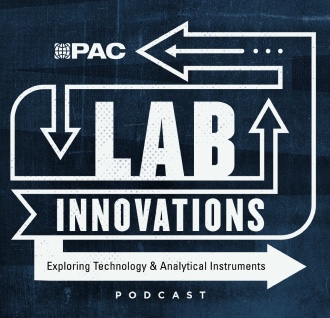Nov-2022
Conversion to a green refinery
Assessing the options, risks, and viability of the biofuels refinery of the future.
Scott Sayles and Robert Ohmes
Becht
Viewed : 10058
Article Summary
In order to meet the mandates of the Paris accord, as well as carbon intensity and greenhouse gas emission reductions in traditional refining processes, fossil fuel-based transportation fuels will be substituted by a combination of electric vehicles, bio-derived, and renewable fuels. Existing refining and petrochemical assets are seen as key elements in the energy transition equation, as much of the current processing and distribution infrastructure can be repurposed for this new reality. This change in the marketplace will drive traditional refiners to examine processing and configuration options to align with the new feedstock and product profiles as well as energy input options. Those entities that are able to meet the changes in this dynamic market while remaining profitable will continue as viable enterprises.
This article will outline the various processing schemes, available technologies, feed and product possibilities, risk profiles, and optionality that exist to assist energy firms in their decision-making process. In addition, the impacts and requirements on the utility and logistics systems will be addressed, as these areas not only offer further opportunities to meet sustainability targets but, if not managed properly, can also adversely affect a project’s operational viability. A series of use cases, along with real-world experience, will be used to examine various scenarios and provide key learnings to energy entities.
Framing renewable fuels challenge
The regulatory environment provides the economic structure for the viable conversion of fossil fuel refineries into biorefineries. The biofuels refinery of the future will initially build upon the refineries of the present, which will radically change into the refinery of the future. Existing refineries all have different unit configurations and capabilities that make conversion to a biorefinery more or less feasible. For example, a simple hydroskimming refinery will require more capital investment than a full conversion refinery to transition into a biofuels facility. In general, the more complicated the refinery complex, the easier the conversion becomes (Rutz, et al., 2020), (Bacovsky, et al., 2010).
Conversion to a biorefinery will likely follow a phased approach. The first step in the conversion is removing carbon from fired sources, while the reduction of fossil feedstocks and replacement with biofeeds and renewable sources will occur over a longer duration.
The biorefinery will combine renewable feed sources and fossil sources to manage and reduce Scope 1, 2 and 3 fossil CO2 emissions (Ohmes, et al., 2022).
The power requirements of the refinery will be satisfied from green sources or highly integrated systems. Electricity will increasingly be generated from low-carbon sources such as wind turbines, solar panels, and nuclear energy. The co-processed steam from gasification or steam methane reforming (SMR) and/or auto thermal reforming (ATR) operations will supplant the steam from on-demand boilers, thereby reducing fired duty, while hydrogen will replace fossil fuel combustion in higher-temperature furnaces.
Reducing precombustion emissions entails removal of carbon from the fuel gas system using reforming (SMR and ATR) or gasification technologies (Eide, et al., 2005). The CO2 from the reforming processes is captured, and the hydrogen is used for the downstream fired sources to produce only water in the flue gas. Oxygen injection is also possible to increase the CO2 in the stack, thereby improving CO2 removal (Sharma, et al., 2021). Pre-combustion configurations are summarised in Figure 2 (Eide, et al., 2005).
Post-combustion removal uses either chemical or physical separation technologies to remove the CO2 from the flue gases (see Figure 2), (Tellini, et al., 2011) (Metz, et al., 2005), (Ferguson, 2010), (Douglas, et al., 2006), (Menon, et al., 2009), (Miracca, et al., 2009), (Schenk, et al., 2022), (Kiss, et al., 2016).
Using such carbon capture technologies, the refinery fired assets will become carbon neutral, with a limited amount of uncaptured CO2 formation.
Refining schemes
Biorefinery schemes start with the available technologies and are feed-dependent, as shown in Figure 3 (Melero, et al., 2012), (Sayles, et al., 2022).
The process line-up must be designed for the types of feedstocks to be processed as the feedstocks define the renewable feed processing limitations for each processing unit. The issues encountered are similar to the current fossil fuels crude purchasing optimisation systems. The renewable challenge is to get feedstock to the processing facilities on a scalable basis, along with associated costs and a sustainability basis.
The feeds with longer chain fatty acids favour diesel, whereas shorter chain feedstocks favour jet. The ratio of carbon and hydrogen to oxygen ranges from high for tallow oil to low for tall oil, which is also more difficult to process (Sayles, et al., 2022).
Seed oils are the easiest of the potential feeds and, after proper pretreatment, can be co-processed in existing refinery hydrotreaters or the FCC unit. However, these feedstocks are in competition with the food supply and are not a viable long-term option. The use of non-edible feeds requires further consideration to understand the upgrading options. These are the third-generation feeds, such as wood waste, municipal waste, and other renewable non-edible sources, that do not compete with food production (Rutz, et al., 2020), (Albrecht, et al., 2011). These feeds require further upgrading, and the current challenge is to create sufficient supply and associated supply chain to bring those feedstocks to existing refineries or build dedicated renewable processing assets near existing refineries, as both allow leveraging their assets and infrastructure.
Feed and product possibilities
A refinery effectively takes low H/C (hydrogen to carbon) fossil crudes or biomass and converts them into high H/C ratio products using: Œ Hydrogen addition with a hydrocracker or high-severity hydrotreater  Carbon rejection with a thermal/FCC unit or thermal pyrolysis.
The following sections will examine various feedstocks and the technology options for processing each one:
Triglycerides
A reasonable-scale biofeed facility would be ~15 MBPD, with the range being 5 to 60 MBPD. The best possible economic outcome is to leverage existing fossil fuel refineries and the associated supply chain. The use of existing storage and transportation to market is desirable.
The feedstocks are different enough in composition that the feedstock storage considerations are modified compared to fossil fuels.
Advanced renewables
Feeds not readily processed using current technology are considered advanced renewable feeds, such as:
- Cashew nut oil
- High oleic sunflower oil extract
- Animal fat
- Brown grease
- Tall oil pitch
- Wastewater oil collections (such as fats, oil and grease, or FOG)
Add your rating:
Current Rating: 4

















